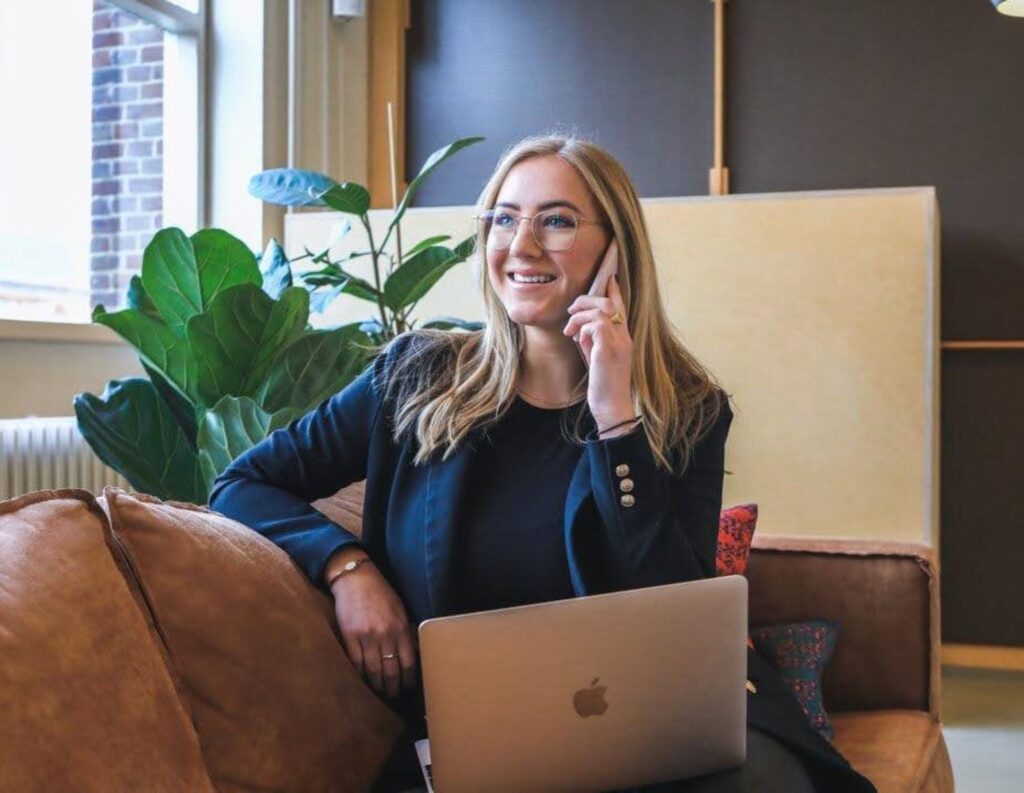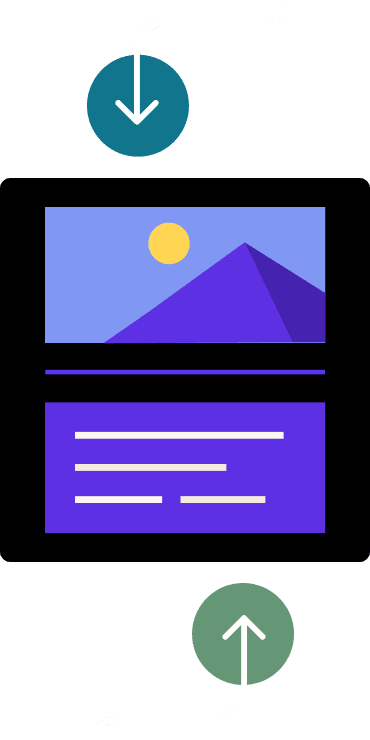Get the six proven steps to successful sales using consultative selling. Learn the tools that streamline the process and get real-world examples of how the process works.

Are you getting in front of leads but missing the close because prospects are feeling put off by your sales techniques? Maybe you have a complicated service or high-end price point that prospects don’t feel comfortable moving forward with.
Missing out on those leads after spending all that work getting them there in the first place can make you wonder if it’s all worth it.
Consultative selling is a technique that combines perfectly with small businesses that have a complicated service or need a little warming up before clients feel comfortable moving forward. Learn the techniques of consultative selling, get some real-world examples, and discover the tools that streamline the entire process.
Jump to:
- How does consultative selling differ from other sales strategies?
- Key steps of consultative selling
- An example of consultative selling
- What type of businesses should use consultative selling?
- What tools can help ensure success with consultative selling?
- Why it’s time to upgrade your consultative selling
How does consultative selling differ from other sales strategies?
A consultative sales approach is often contrasted with solution selling as a recommended strategy to close deals.
Solution selling is a more traditional approach where the salesperson focuses on what the customer’s main pain points are and attempts to deliver a tailored solution. The salesperson is an authority on the subject matter and is giving a specific solution for a specific problem.
Consultative selling focuses more on the relationship between the salesperson and the client. The salesperson doesn’t assume the client needs a specific solution at all. Instead, they assume the client needs more information or a helpful guide to understand what solution works best for their situation.
Consultative selling success relies on trust and an understanding of value built with the client. Small businesses that follow this strategy believe the answer to landing more leads and securing future deals is based on the relationships created between the clients and the small business.
Key steps of consultative selling
This sales approach is an iterative process that can be scaled if you have the right consultative selling skills.
1. Research
It starts with your research. How much effort you put in at this stage informs the kind of results you get from the process. Remember, you want to build a relationship with your client, so the more you know about their background the better you can serve them.
Look into your client’s LinkedIn page and other social media channels to get a picture of what the client needs. If you’re a B2B company, check out any of the potential client’s company reviews and take a look at some of their competitors to see what makes their brand different.
You want a holistic idea of the company to identify areas where your services could make an impact on their results. Think of yourself as a general doctor who needs to know everything about your patient before diagnosing and proposing the correct help.
2. Ask questions
Potential customers have been confronted with endless marketing efforts since they were young, which is why most people can spot an aggressive sales pitch before it even begins. Instead of asking leading questions that direct the client to your service, try asking open-ended sales questions that can’t be answered with a simple yes or no.
These types of questions get the client to open up about their pain points and problems, which will help inform the direction you want to take the conversation. You want the process to feel natural and supportive so the client lowers their guard and provides authentic information about how they feel.
Here are some open-ended questions to use:
- Have you tried anything previously to try and solve this problem?
- What worries do you have about facing this challenge?
- Is there anything we haven’t discussed that you’d like me to understand about your needs?
Your tone (and body language if you’re making the sale in person) is just as important during this process as the questions you ask. People will respond differently to the techniques you use, so make sure you remain positive and calm to find out what works best.
3. Actively listen
Making someone feel heard goes beyond simply listening to what they have to say. Active listening is a technique that shows others you have not only listened to what they said, but you understand what they mean and you offer relevant and helpful feedback.
You may have heard the phrase, “Listen twice as much as you talk.” That’s good advice for consultative selling. But what most business owners miss is the other elements that make up active listening.
Here are a few helpful pointers to guide you in the right direction:
- Be attentive
- Offer value
- Be patient
- Summarize and paraphrase
- Mirror tone and emotions
Traditional sales techniques have lost touch with active listening and are more aggressive and confrontational as a result. Active listening will take some time to master and feel comfortable with.
4. Qualify
You may not be aware but while you are asking questions and actively listening, you are also qualifying each prospect to see if they would be right for your business. There are two main areas of information you are gathering.
When you’re trying to close a lead using consultative selling, or any selling technique for that matter, you need to be talking to the decision-maker. Talking to a decision-maker directly gives your consultative selling a chance to close and make a sale. Otherwise, a gatekeeper needs to relay your message to the decision-maker and could leave out vital information about your service.
The other qualifying factor is the client’s budget. Don’t be surprised if the initial conversation about budget has a closed-off and rather guarded tone. It’s your job as the consultative seller to understand the prospect’s budget and align a solution that makes them feel comfortable.
5. Collaborate
Think of yourself more as a trusted advisor during the sales process as opposed to a salesperson. The client is looking to you for help and your main job is to provide them with the best information to make informed decisions.
Of course, this doesn’t mean you are trying to lead clients away from your service. Remember going to the grocery store on a weekend and getting free samples of products offered in the store? This is similar to what you’re doing when collaborating with clients. Think of it as a sample you are providing to give clients a taste of what they will experience when signing up for your service.
At this step, you are mentioning your service for the first time and aligning your positioning to match the needs of your client that you uncovered during the question and listening phase.
6. Close
You, like many other salespeople, might imagine closing a deal the way Hollywood does it: Some flashy movie star is saying all the right things at the right time and the prospect is almost giddy with excitement when signing on the dotted line.
The truth is, with consultative selling, whether or not you close the deal is ok. Consultative selling is a long game that takes time and patience to see conversions. A prospect that didn’t close today may come back in a month or six months when they’ve had a bad experience with a competitor and remembered your generous attitude.
If the lead doesn’t close, keep the friendly demeanor and follow up with them through email. Let them know you genuinely enjoyed the conversation and the door is always open if they need to come back.
An example of consultative selling
To illustrate the power of consultative selling, here is an example that outlines how the process is used.
A local cleaning company is having a hard time closing inbound leads through their website. The company approaches a digital marketing consultant with the hope they can optimize the site for more conversions.
Instead of selling a package for website optimization, the consultant instead asks a few follow-up questions after hearing the company’s issues.
- Have you already tried optimizing the site? What were the results?
- How does your company attract new visitors to the site?
- Are there any qualifying mechanisms on the site to filter out dead-end leads?
Using these questions, the consultant identifies that instead of the company having a website problem, they are actually pulling in the wrong type of leads. The people who visit the site aren’t actually interested in the service the company offers but were pulled in by misleading copy on the website.
Instead of immediately prescribing a website optimization package, the consultant used consultative selling to get to the core of the issue. This allowed them to offer a more relevant solution that would actually lead to results.
What type of businesses should use consultative selling?
Businesses of any size and industry can benefit from consultative selling, but it does particularly well in specific markets. Since the process of consultative selling is long-term and focuses on customer relationships over immediate solutions, services that have a longer sales cycle typically do better with consultative selling.
Businesses that are high-end or have a high price point will need to build relationships with customers before they are willing to make a large investment. In the same way, SaaS companies also need to help customers feel comfortable with adopting a new technology by using consultative selling.
Digital marketing consultants, coaches, and course creators should also consider making the focus of their sales techniques on the relationships they are building with their clients.
What tools can help ensure success with consultative selling?
The long-term nature of consultative selling makes it necessary to have an organization system that keeps up with clients long-term. A good Customer Relationship Management (CRM) software solution keeps all your customer data organized and centralized in one platform.
To compete in today’s technological sprint towards progress, you’ll need the help of AI to automate your repetitive tasks and analyze huge amounts of data. The tool can process your entire customer database and offer you tailored solutions on how to improve relations.
Another tool helpful for consultative selling is a proposal and payment system. When you’re closing more leads, you need to finish the transactions and get payments in order as soon as possible. A helpful invoicing and payment tool streamlines the entire process and gets your client started immediately.
Why it’s time to upgrade your consultative selling
Implementing the tips in this article will be your starting point for closing more leads using consultative selling. But it won’t help you scale your operations once you crack the code to more sales. You need tools and technology that help you and your team work smarter, not harder.
HoneyBook has robust invoicing, payment, project management, and automated workflow tools to make your consultative selling process more efficient. The tool doesn’t require any coding knowledge and you can manage your entire client workflow in one platform.


